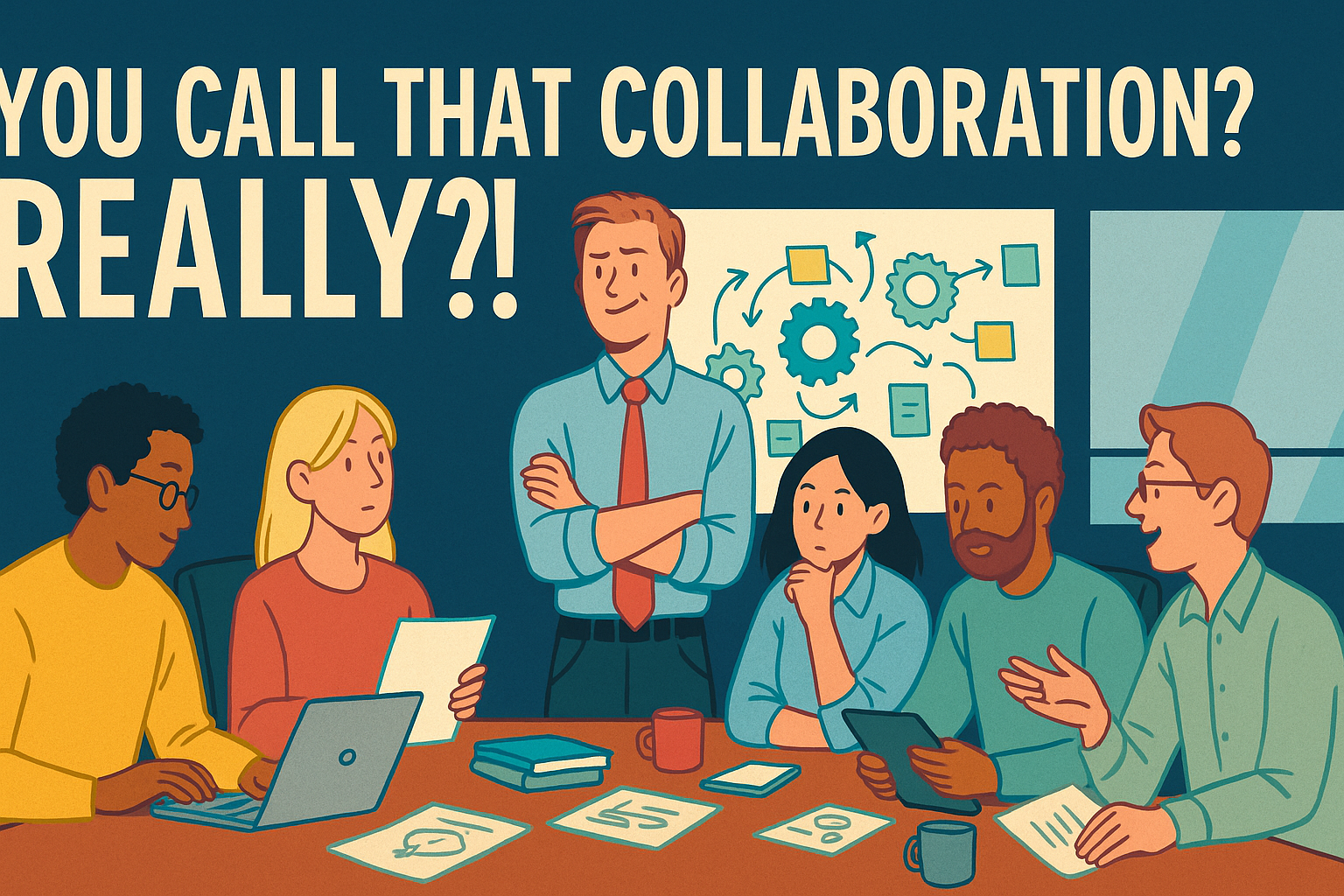Collaborating To Support Neurodiversity
Why Your "Teamwork" Isn’t Working—and What Collaborative Intelligence Actually Looks Like
We throw the word collaboration around like it’s a Post-it note: stick it anywhere, call it done.
But real collaboration? That’s rare. Especially in a world where Slack threads/meetings/email chains are mistaken for strategy, Asana boards for alignment, and Diversity Weeks for inclusion.
It’s not that people don’t care. It’s that they haven’t been taught how to design collaboration—especially in cognitively diverse teams.
If you’ve ever sat in a “team brainstorm” where three people talk, four check out, and the rest nod without saying a word… congrats. You’ve experienced performative collaboration.
And guess what? It’s costing your company a lot.
Collaboration Is Broken — And It’s Expensive
According to Adalyon Research, companies lose $40 billion a year to poor collaboration. Not slow wifi. Not bad marketing. Collaboration.
More than 86% of business leaders say poor collaboration is the #1 reason projects fail (Fierce Inc.). Yet only a fraction have a measurable system for making it work.
And the average employee? They waste up to 16 hours a week navigating unclear communication, duplicated efforts, and misaligned workstreams.
That’s not “collaboration.” That’s chaos with a calendar invite.
What Most Teams Miss About Neurodiversity
In the push for more inclusive teams, we’ve made one massive error: we assumed that simply being more diverse would make us better.
But diversity alone doesn’t improve performance. Diverse teams likely underperform homogenous ones—unless they know how to collaborate.
This is especially true for neurodiverse teams. People who think in patterns, colors, movement, silence. People who process fast and people who process deep. People who can execute ten things at once and people who solve the impossible with quiet intensity.
The point isn’t to “include” everyone politely. The point is to create systems where everyone can contribute meaningfully.
That’s what my Collaborative Intelligence Framework is designed to do.
Collaborative Intelligence: A System, Not a Slogan
After 15 years working across education, organizational strategy, and leadership development—from inner-city schools to international NGOs—I saw the same thing again and again:
Smart people. Good intentions. Disjointed teams.
So I built a framework to fix that—one that helps teams build, measure, and sustain real collaboration, especially in cognitively diverse environments.
Here’s how it works:
1. Individual Inspiration
Everyone processes information differently. Before you throw a team into a problem-solving session, give individuals a way to digest and contribute on their terms—quiet prep, visual notes, written reflection. Create a runway before takeoff.
2. Team-Level Integration
Collaboration isn’t about group hugs. It’s about clarity. Define goals. Make responsibilities visible. Measure outcomes together. Teams need more than vibes—they need structure.
3. Collaborative Ecosystem
This is where it sticks. Workflows that support asynchronous feedback. Shared vocabularies for decision-making. Leadership that models co-creation instead of command-and-control. This is where innovation thrives.
When we apply this framework, we don’t just feel more connected—we work better, smarter, faster. Because everyone sees how their input moves the mission forward.
What This Looks Like in the Wild
Here’s what Collaborative Intelligence isn’t:
A 3-hour retreat with trust falls and where people say “teamwork” a lot.
Adding one neurodivergent employee and calling your org inclusive.
Replacing communication with more tools no one uses.
Changing your company LinkedIn bio for a few days.
Here’s what it is:
Designing meetings that let different processing styles shine.
Building shared, repeatable systems for collaboration.
Training teams to reflect, adapt, and own outcomes together.
And yes, that includes improving actual business metrics:
Fewer project delays.
More innovative output.
Lower turnover.
Higher employee engagement and retention.
From Celebration to System
Neurodiversity shouldn’t just be celebrated in a LinkedIn post during “Awareness Week.”
It should be baked into the way your team actually operates.
The best teams don’t just talk about collaboration. They systematize it. So, before you plan another off-site or slap “collaborative” on your job descriptions, ask:
Do we actually know how to work together—or are we just hoping it happens?
If you’re ready to stop losing money, time, and talent to broken collaboration…
Let’s talk.

